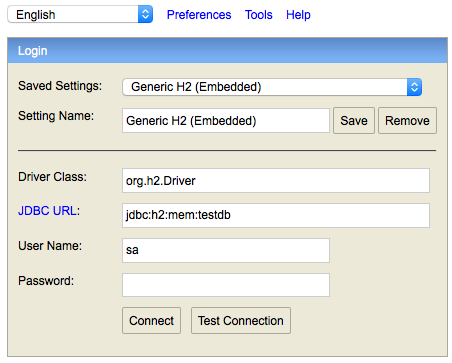Roads & PavementRoads & Pavement
Barefoot
Minimal
Low
Medium
High
Maximal
All around running shoes offer comfort and cushioning for daily runs, jogs, walks, and long mileage. They offer enough versatility for both faster and slower runs and are a great option for those who want one running shoe to do it all.
Fast run or uptempo running shoes are lightweight and responsive. They offer streamlined designs that have minimal uppers and offer a high level of energy return. These shoes are a great option for faster runs in the week or those looking for a livelier experience.
Max Cushion shoes offer premium cushioning with ample ground protection and a stable ride. These types of shoes provide abundant impact protection that softens landings while running at any pace or distance. These types of shoes are best for slower recovery runs and easy days where comfort takes priority.
Racing shoes are designed with optimal performance in mind. These types of shoes have snug-fitting uppers, energetic midsole foams, and features implemented for maximum efficiency. These types of shoes are best for runners looking to gain the ultimate advantage in races but may sacrifice some durability and comfort.
Gym Workout shoes offer a stable and versatile ride. They have a firmer underfoot feeling that provides stability for lateral movements with comfortable uppers. These types of shoes are best for trips to the gyms, cross training, casual wear, and light running. Part 13 Rest API Microservices H2 Database Mock Database for Unit Integration Testing
Road running shoes feature smooth outsoles that are designed for running on paved surfaces such as roads, sidewalks, and bike paths.
Designed to handle most trail runs, these shoes prioritize comfort and a smooth ride. These shoes are great for anything from smooth singletrack, park trails, and fireroads making them ideal for those who run from their doorstep on streets before hitting the trail.
These shoes are best used for hard, rugged trails such as shale, granite or sandstone where grip on smooth surfaces and underfoot protection are important.
Designed for use in muddy, soggy conditions, these shoes feature very aggressive outsoles that dig deep into soft ground for exceptional traction.
These shoes feature technical outsoles designed to grip snowy and icy trails making them ideal for winter trail running.
Cushioning level, or stack height, refers to how much shoe is between your foot and the ground. For this category, we reference the amount of cushioning below the forefoot as the heel height will be equal to or greater than the forefoot height.
GitHub redlab inmemorydb examples An example setup of testing
0-13mm. The Shoe generally does not have a midsole and feels like there is no cushioning. This shoe is all about feeling the ground underfoot.
14-18mm. The shoe has a thin midsole that allows for a natural running experience. Racing shoes and minimalist shoes are common here. These shoes offer a feeling of being connected to the road or trail.
19-23mm. The shoe has a slightly cushioned feel and may feature added cushioning technologies. Performance training shoes and some trail shoes are common here. These offer protection during footstrike but prioritize a lightweight, grounded experience.
24-28mm. These shoes have a stack height that fall near the middle of the spectrum.The shoes in this category are verstaile and great for all types of runs and distances.
29-34mm. The shoe has a thick midsole and ample cushioning. These shoes are highly protective and absorb more impact than the body.
35mm plus. The shoe has an extremely thick midsole and extra cushioning. The focus is on protection and soft foam underfoot with hardly any ground feel.
Neutral shoes support the foot through a normal range of arch collapse and generally do not have a built-in technology to correct movement.
Stability shoes are a great option for those who overpronate or need added support. These shoes help to limit the inward rolling motion of the ankle while running or walking and assist in guiding the foot straight through the gait cycle. How to Write Integration Tests with H2 In Memory Database and
Product Details:
java Why H2 database doesn t show my table in the browser shop, How to see the specific data in H2 database Get Help Metabase shop, Using the H2 Database Console in Spring Boot with Spring Security shop, Java Connect to H2 Database Examples shop, SpringBoot Resetting H2 database before each integration test shop, Java H2 Database Tutorial shop, Spring Boot H2 Database javatpoint shop, Don t use In Memory Databases H2 Fongo for Tests shop, GitHub h2database h2database H2 is an embeddable RDBMS written shop, Unit Testing using H2 in memory DB shop, Critical H2 database console vulnerability shares similarities to shop, H2 Database Introduction shop, Don t use In Memory Databases H2 Fongo for Tests shop, JUnit 5 tutorial part 2 Unit testing Spring MVC with JUnit 5 shop, What is Spring Boot H2 In Memory Database and Why do we use it shop, JDBC H2 Database Create Read Update and Delete Example Tutorial shop, Integrating Spring Boot and Spring JDBC with H2 and Starter JDBC shop, How to connect to the in file H2 database SmartBear Software shop, What is Spring Boot H2 In Memory Database and Why do we use it shop, How to Write Integration Tests with H2 In Memory Database and shop, GitHub redlab inmemorydb examples An example setup of testing shop, Part 13 Rest API Microservices H2 Database Mock Database for Unit Integration Testing shop, Using the H2 Database Console in Spring Boot with Spring Security shop, H2 Database Engine with testing. Bonjour tout le monde by shop, How to Perform Integration Testing using JUnit 5 and shop, java How can I see any table when I run any test method through shop, Spring Boot CRUD Example with H2 Database shop, Spring Boot Data JPA using H2 database application Junit tests using MockMVC Spring Boot shop, Spring Boot H2 Database GeeksforGeeks shop, How to Integrate H2 database in Spring Boot App Java Code Geeks shop, Features shop, Unit Test JPA with JUnit H2 In Memory Database Memorynotfound shop, Spring Boot and H2 in memory database Why What and How shop, Spring Boot With H2 Database Baeldung shop, Spring Boot With H2 Database Java Development Journal shop, H2 In Memory Database With Spring Boot by Apurv Sheth Medium shop, grails Connect to H2 database using IntelliJ database client shop, Spring Boot JPA and Unit testing with JUnit by Haris Zujo Medium shop, Quickstart shop, Testing Quarkus application with RestAssured and H2 Database Quarkus Tutorial QUARKUS Java shop, GitHub hqstevenson h2 junit JUnit Rule providing and embedded shop, Features shop, junit5 How to access H2 in memory Database during Junit Testing shop, How to use H2 DB in Core Java Project CodersTea shop, Quickstart shop, Spring Boot H2 Embedded Database Example Java Junit Test H2 Database Tutorial shop, java H2 does not detect group by issue on Junit Test Stack shop, Spring Boot and H2 Database Integration Example shop, java How to see all tables in my h2 database at localhost 8082 shop, Tutorial shop, Product Info:
H2 database junit shop.
- Increased inherent stability
- Smooth transitions
- All day comfort
Model Number: SKU#7271027



